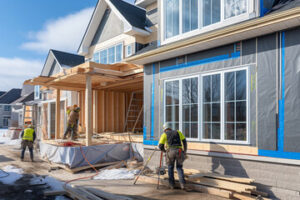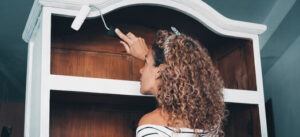House Painters Modesto CA understand the depth of their craft. Their commitment to quality results is evident in every brushstroke, transforming spaces and bringing life to walls that stand the test of time.

They prioritize open communication and clearly communicate repair needs, recommendations, and charges, keeping surprises to a minimum and satisfaction high. They also secure your investment through fair payment arrangements that align with industry standards.
A professional house painter is more than just someone with a bucket of paint. They have industry-leading training and expertise, and they offer a complete range of services to meet your needs. You can also rely on their knowledge of current color trends and design styles, which will help your home maintain its appeal over time. Inquire about their licensing and insurance to ensure they adhere to the appropriate standards.
A quality paint job not only protects your home’s structure and enhances curb appeal, but it can also increase its resale value. Professional house painters can tackle a variety of surfaces, including interior walls and ceilings, trim, doors, and windows. They can even handle unique surface challenges like water stains or sagging areas. They also use proper preparation techniques, and they ensure that all painting materials are safe and effective for your home.
Before beginning a project, they will consult with you to discuss your goals and vision for the space. They will consider factors like lighting and existing decor to ensure the chosen colors complement both aesthetics and functionality. In addition, they have a firm grasp of color theory and can craft atmospheres that evoke calmness or inject vitality.
They will also provide expert advice on the type of paint to use, and they will recommend the best color palette to suit your home’s architecture and style. They will be able to create a cohesive, complementary color scheme that will work with both natural and artificial light sources, and they will be able to select colors that will stand the test of time.
They will prepare the workspace by moving furniture away from walls and covering or removing items to prevent damage. They will also take the time to clean and vacuum floors, and they will make sure the space is free of debris, mildew, and other contaminants that can affect the finished result. They will then apply the primer and paint and finish the edges and corners, ensuring clean lines and no drips. They will keep you updated throughout the process and provide a comprehensive cleanup when they are done.
Transparency
Professional house painters are transparent with their clients, making the process of selecting paint colors, finishes, and materials easy to understand. They also share a thorough understanding of the project scope and timeline, avoiding misunderstandings that can lead to costly re-dos or dissatisfaction with final results.
Legitimate house painters will not employ pressure tactics that create a sense of urgency, as they recognize that this tactic can encourage hasty decisions and buyer’s remorse. These pressure tactics can include offering limited-time offers that appear too good to be true and implying that there is only a short window of opportunity to secure the services they’re selling.
Similarly, deceptive house painters may fabricate repair needs to inflate the cost of the painting project. Such deception can leave homeowners with a bill that they did not expect, resulting in the need for further repairs and frustration over an unauthorized expense.
A reputable house painter will provide accurate quotes that are based on market rates and take into account the scope of the project. They will also be open to negotiating prices during slower times, when they are more willing to offer discounts that align with the industry standard.
When evaluating house painting companies, review their portfolio of past projects to see the quality of the work and determine whether it fits your vision for the project. Also, ask how many years they’ve been in the business to see if they have extensive experience working with various styles and types of homes.
Reputable residential painters stay apprised of industry developments, ensuring that their clients receive the latest technologies. This includes advanced paint formulas that resist stains and wear, as well as eco-friendly options that contribute to a healthier living environment. This commitment to innovation is also evident in their punctuality, as they prioritize arriving at work on time and completing the job according to agreed-upon deadlines. Their meticulous approach to work reflects the value they place on their reputation and client satisfaction.
Expertise
Whether it’s an exterior house painting project or revamping the kitchen walls, professional painters bring a level of expertise that elevates home renovation projects. This includes a deep understanding of paint and surface preparation, ensuring that surfaces are well-protected from moisture, weather, dirt, and other factors that can lead to long-term damage or failure. Professionals also know how to apply paints for maximum durability, reducing maintenance and repair costs in the future.
In addition to a thorough consultation, experienced home painters provide homeowners with an accurate quote for their services, outlining the project scope, completion timeline, labour and material costs, and any special considerations for the job at hand. They can also advise on color selection, as a well-chosen palette can enhance the architectural features of your home, boosting its curb appeal and adding value to it.
Skilled house painters utilize the latest materials and techniques to deliver superior results that surpass homeowner expectations. This includes paints with low volatile organic compounds to maintain indoor air quality and stain-resistant formulas that resist the fading caused by sunlight. They also ensure that all painting projects are completed with meticulous attention to detail and a clean worksite.
Hiring a House Painter is an important decision that should not be taken lightly. It is a good idea to get two or three quotes from different professionals, comparing both their pricing and the amount of work they propose to complete. Ultimately, you should choose a professional with extensive experience who is licensed and insured. Licensing confirms that the company meets industry standards and adheres to regulations, and insurance protects you in the event of damage or injury while working on your property.
Another way to assess the professionalism of a house painter is to check their client feedback. A reputable professional should have a solid track record of satisfied customers, and this information can be found online or in local directories. It’s also a good idea to request a list of references and see previous work in person. This allows you to gauge the craftsmanship and quality of the finished work, as well as the professionalism and punctuality of the painting crew.
Communication
A professional house painter will clearly communicate the project scope, timeline, and labour and material costs. This will help homeowners understand what their budget should look like before the work begins. It is also important for homeowners to find out how the painter prefers to communicate, whether it be via email, text or phone call. This will allow the homeowner to determine how much they want their painter involved in their project, as well as how often they would like a status update on how things are going.
Another sign of professionalism is punctuality. Painters will be there when they say they will, and they will complete their work in a timely manner. This allows homeowners to continue living in their home without the inconvenience of tripping over ladders and drop cloths.
House Painters should be able to provide expert advice on choosing colours that will work best for their client’s space. This requires a degree of training and on-the-job experience that many DIY enthusiasts lack. It’s also a good idea for house painters to be familiar with the latest trends and technologies in the painting industry, as this can lead to better, longer-lasting results.
Professional house painters are committed to quality workmanship that meets and exceeds industry standards. This means using premium-quality paints, materials and tools that will deliver uniform coverage, smooth finishes, and precise detailing. It also means leveraging their knowledge and expertise to ensure that the job is done correctly the first time, eliminating the need for costly touch-ups or repainting.
It’s also important for a house painter to be fully licensed and insured. Licensing ensures that they follow industry standards and regulations, while insurance covers them in the event of an accident or damage to your property. Make sure you ask potential painters for proof of licensing and insurance before hiring them to ensure they are legitimate professionals.
It’s also a good idea to check how long a house painter has been in business. A long-established business is more likely to have built up a solid reputation in the community, as well as a strong network of repeat customers.
